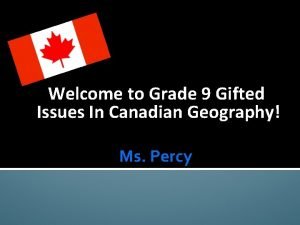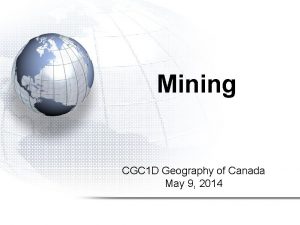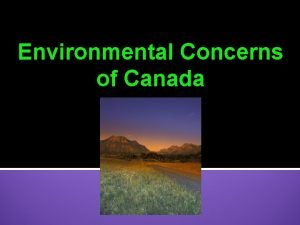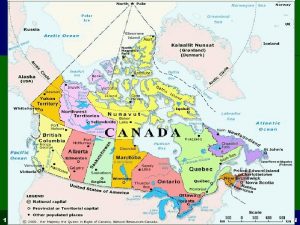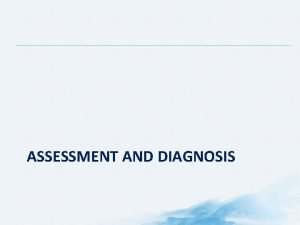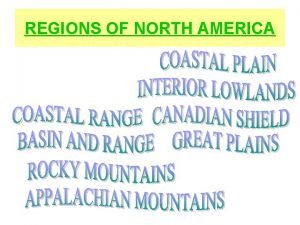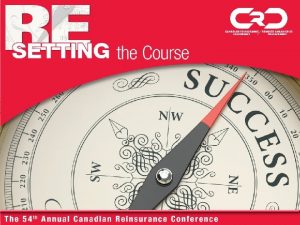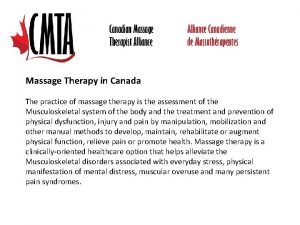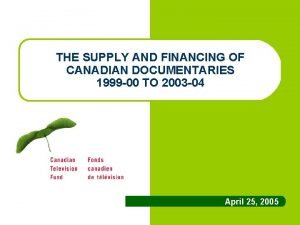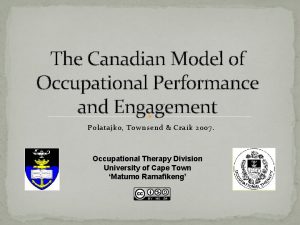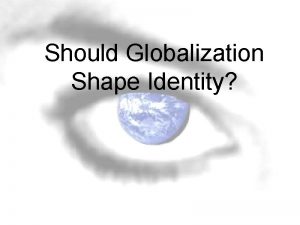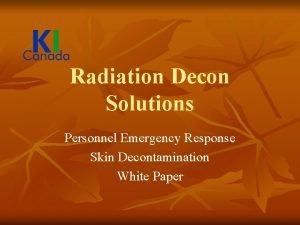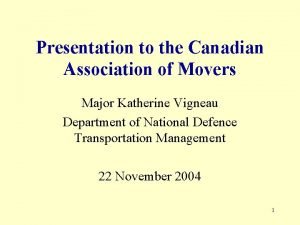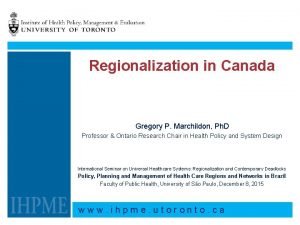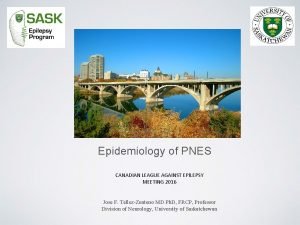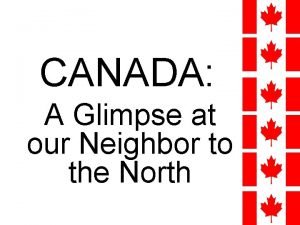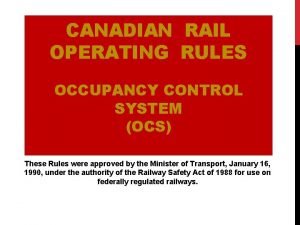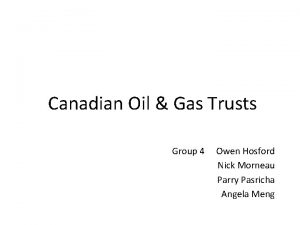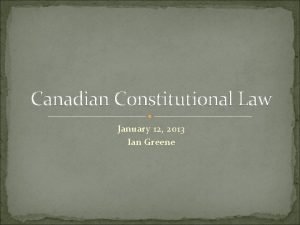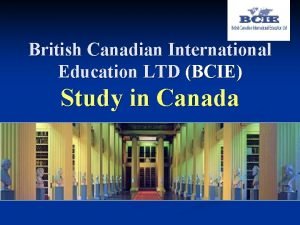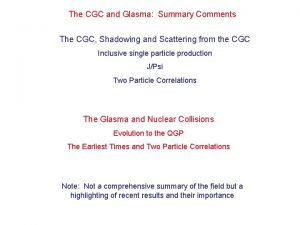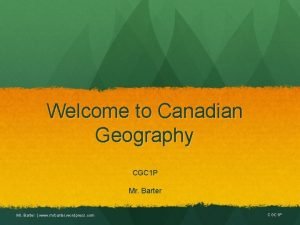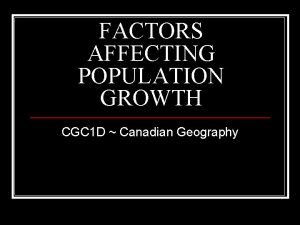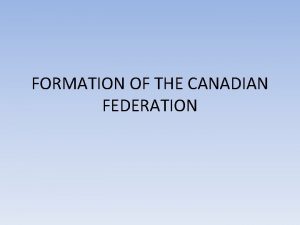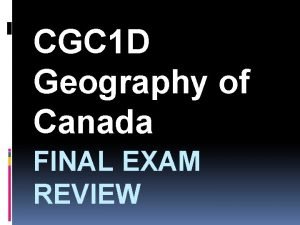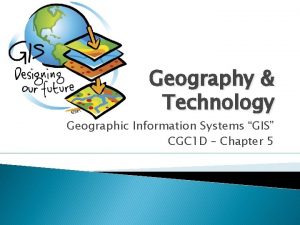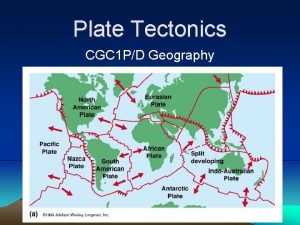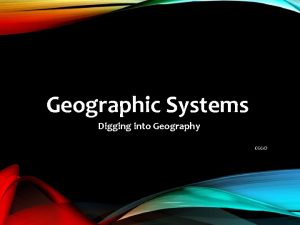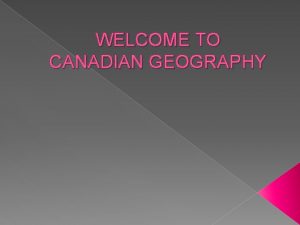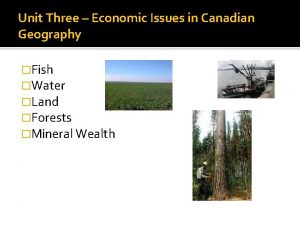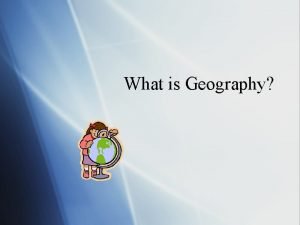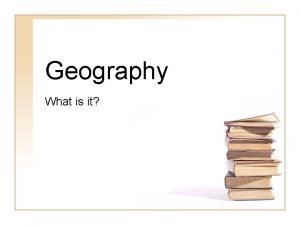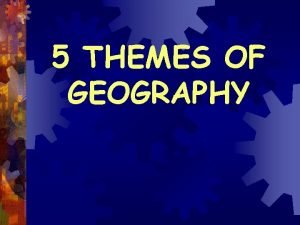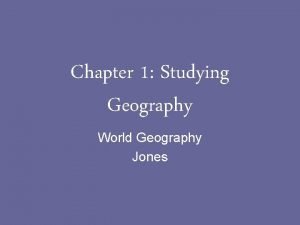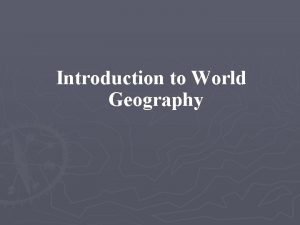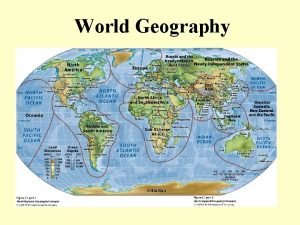CGC 1 P Issues in Canadian Geography Teacher


































- Slides: 34

CGC 1 P – Issues in Canadian Geography Teacher: Mrs. Cameron Rm: 201

What is Geography? • Geography is the study of the earth’s landscapes, peoples, places and environments. It is, quite simply, about the world in which we live. • Geography is unique in bridging the social sciences (human geography) with the natural sciences (physical geography). Human geography concerns the understanding of the dynamics of cultures, societies and economies, and physical geography concerns the understanding of the dynamics of physical landscapes and the environment.

Geography Informs us about…. • The places and communities in which we live and work. • Our natural environments and the pressures they face. • The interconnectedness of the world and our communities within it. • How and why the world is changing, globally and locally. • How our individual and social actions contribute to those changes. • The choices that exist in managing our world for the future sustainably. • The importance of location in business and decision-making.

What does Geography have to do with your life? If someone told you “everything has to do with geography, ” would this seem like an exaggeration? Geography is all around us, and geographic issues directly affect almost every aspect of our lives. Successful geographers are always curious about the world around them. But curiosity is just the start. Once an important question has been asked, a geographer needs to know how to find the best answer.

Eg. How could this insect cost Canada’s economy billions of dollars?

Questions like this are key to thinking like a geographer. Geographers always ask three key questions: What is where? Why there? Why care? Let’s see how this works using the example of the mountain pine beetle.

What is Where? Geography is all about location. You need to know the location of something before you can move on to more complex questions. Answers • What? This is a mountain pine beetle. It lives most of is life inside the bark of pine trees. If enough beetles infest a tree, they will kill the tree. • Where? The mountain pine beetle is native to western north America, from northern Mexico to central B. C. In the last 20 years, its range has expanded into parts of northern B. C. and Alberta.

Why There? Answer There are both simple and • complex reasons why things are located where they are. In some cases, the natural environment, such as landforms or climate patterns, • provide an explanation. In other cases, human actions affect the natural environment. Mountain pine beetles have been around for thousands of years without causing too much damage. Why has this changed? Scientists have linked their increase in numbers and range to warmer weather caused by global climate change. In the past, cold winter temperatures limited the number and spread of the beetles. Recent winters have been warmer, so more beetles are surviving. Therefore the spread of the pine beetle shows links

Why Care? Answer • There are two reasons why we The importance of this should care about the question becomes clearer if mountain pine beetle. we expand it a bit and say, • The first is economic. Forestry “Why SHOULD we care? ” is a key source of wealth and employment. Mountain beetles are spreading eastward, threatening the forest industry across Canada. • The Second reason is environmental. The beetles are disrupting an important ecosystem. It may be many years before we know their full impact.

Four Important Geographic Concepts: INTERRELATIONSHIPS Geographers try to identify the relationships that exist within and between natural and human environments. If you can identify interrelationships, it is easier to see how things affect each other, and to answer the question “WHY CARE? ” SPATIAL SIGNIFICANCE Spatial significance is related to the key questions “WHAT IS WHERE? ” and “WHY THERE? ” The location of something can be important for many reasons. The significance of a place can also be different for people, animals, and plants. This way of thinking can help you explore connections between natural and human environments.

Four Important Geographic Concepts: PATTERNS AND TRENDS Geographers are always on the lookout for patterns and trends. Being able to identify patterns and trends can help you understand why something is where it is, and why this matters. GEOGRAPHIC PERSPECTIVE A perspective is a way of looking at the world. Geography is a unique subject that has connections with many other fields, such as economics, urban planning, and history. This allows geographers to consider multiple perspectives while studying an issue in geography. Developing the skill to understand a variety of perspectives can help you solve problems and make judgements. Looking are things from a geographic perspective is central to all geographic analysis.

Geography: Grade 7 “Geography is the study of the land its people” Land (Physical Geography): -Physical Features GR. 7 -Climate -Soils -Vegetation http: //www. iowht. org. uk/Recruitment/Facts. asp http: //www. wvarchitects. com/wv. htm

Geography: Grade 8 “Geography is the study of the land its people” People (Human Geography): -Distribution -Quantity GR. 8 -Composition -Occupation http: //feelingg. hp. infoseek. co. jp/Tra. P-Zimba. People. html

Geography: Grade 9 This year in Grade 9 we will combine the components of both the land the people to study one country and that of course is Canada. http: //www. cic. gc. ca/english/department/brochure/service. html http: //feelingg. hp. infoseek. co. jp/Tra. P-Zimba. People. html

Introduction to Canada Part 1: Area, Population, Density, Wealth

The Area of Canada: Canada is the 2 nd largest country in the world!

Population • Canada ranks 32 nd in the world in terms of population. • Canada’s current population is 35, 749, 600 is • Only one in every 200 people in the world is a Canadian.

Population

Population Density Canada ranks 206 th in the world in population density, with an average of 3 persons/km 2.

Isodemographic map of Canada

Wealth • Canada ranks 11 th in the world in GDP per capita. • GDP, gross domestic product, is the total value of all the goods and services produced in the country in a year. • When it is divided by the country’s population, it gives an indication of the country’s wealth.

Wealth The citizens in countries with a higher average GDP are better able to afford the basic necessities of life: • food • shelter • clothing • medical care. They may also be able to afford some of the luxuries like cars, computers, trips, etc.

Wealth The opposite is true for citizens of countries with lower GDP/capita. However, no matter what the GDP/capita, there are people living in various degrees of wealth and poverty in every country of the world.

Cartogram showing Total GDP

ACTIVITY…

Mind Map of Canada • On the back side of your handout, draw a map of Canada as close to reality as possible. Do this on your own – without looking at other people’s maps or any reference material such as an atlas. • On your map, roughly draw in the provincial boundaries and then label the provinces and territories, then place and label their capitals.

Mind Map of Canada 1. Which parts of Canada do you know best? 2. Which parts of your map are most incomplete? 3. Do you feel it is important to know where places are in Canada? Explain.







 Issues in canadian geography grade 9
Issues in canadian geography grade 9 Cgc minerals
Cgc minerals Cgc bank
Cgc bank Canadian shield environmental issues
Canadian shield environmental issues Canadian geography
Canadian geography Erf form for teachers deped
Erf form for teachers deped Teacher good afternoon
Teacher good afternoon Grade 12 geography settlement
Grade 12 geography settlement How to write an frq for ap human geography
How to write an frq for ap human geography 5 themes of geography ap human geography
5 themes of geography ap human geography Stateless nation
Stateless nation Canadian c spine rules
Canadian c spine rules Atlantic coastal plain facts
Atlantic coastal plain facts Canadian reinsurance conference
Canadian reinsurance conference Canadian armed forces cook
Canadian armed forces cook Cmta massage
Cmta massage Bioinformatics.ca
Bioinformatics.ca Understanding canadian law (clu3m)
Understanding canadian law (clu3m) Canadian smbs 20m
Canadian smbs 20m Tsx:bb
Tsx:bb Accounting principles second canadian edition
Accounting principles second canadian edition Canadian television fund
Canadian television fund Canadian model of occupational performance and engagement
Canadian model of occupational performance and engagement Dimensions of globalisation
Dimensions of globalisation Canadian decon solutions
Canadian decon solutions Canadian congenital heart alliance
Canadian congenital heart alliance Canadian bioinformatics workshop
Canadian bioinformatics workshop Canadian association of movers
Canadian association of movers Canadian constitution
Canadian constitution Canadian league against epilepsy
Canadian league against epilepsy Canadian neighbor
Canadian neighbor Canadian rail operating rules
Canadian rail operating rules Oil sands extraction process diagram
Oil sands extraction process diagram Canadian child labour laws
Canadian child labour laws British canadian international education
British canadian international education
